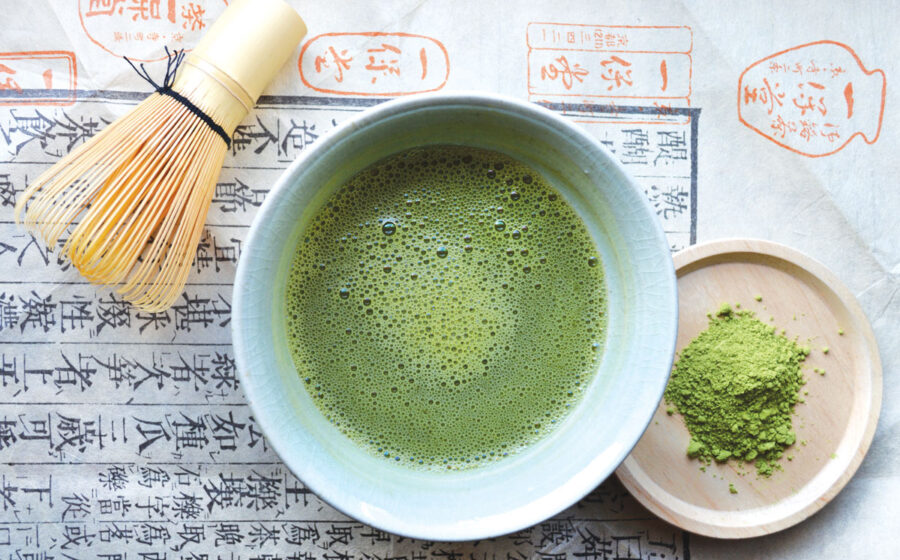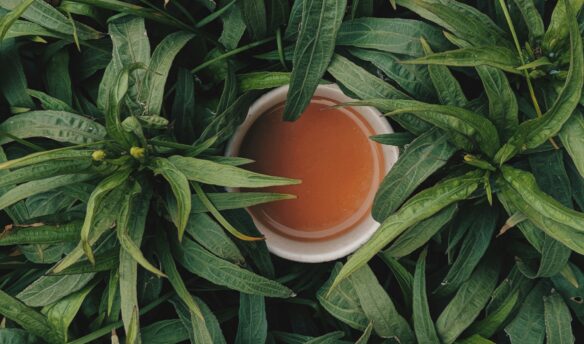[W]hile many revel in matcha’s taste, health benefits, and versatility, like other emerging drinks matcha occasionally falls victim to misunderstanding. As consumers acquire a taste for this wonderful tea from Japan and as matcha gains ground as an ingredient in smoothies, lattes, and other culinary creations like ice cream, drinkers may be left wondering: what is matcha exactly? Many know that it is a powdered green tea, originally used in Japanese tea ceremonies, but where is it grown? How is it made? What type of leaves make up this bright green, health enthusiast’s tea?
The practice of powdering tea may have originated in China. In 1191 CE a Buddhist monk introduced this practice to Japan where the techniques were honed and crafted. The art of the tea ceremony was created, which has become synonymous with matcha. On the market nowadays you can find matcha from China or Taiwan, but high quality matcha comes from Japan.
The main matcha producing regions in Japan are Uji, in Kyoto Prefecture, and Nishio, in Aichi Prefecture. Other regions in Japan may produce matcha, but because they do not specialize in matcha in the same way.
The main matcha producing regions in Japan are Uji, in Kyoto Prefecture, and Nishio, in Aichi Prefecture. Other regions in Japan may produce matcha, but because they do not specialize in matcha in the same way, the quality is less consistent. Additionally, the methods employed by other countries to create matcha may not be the same used in Japan.
The word matcha translates into powdered tea, but not all powdered teas can be called matcha. On the market you can buy teas called “white matcha” or “black matcha” and so forth. This is misleading, especially to a consumer. True matcha must be shade grown, the leaves refined and stone ground. The only tea used for matcha is green tea, not white tea, not oolong tea, and not black tea.
One of the biggest misconceptions is that matcha is made from gyokuro leaves. But while both matcha and gyokuro come from shade-grown green tea, they are processed differently. With gyokuro, the leaves are steamed, dried, and rolled. Matcha on the other hand goes through a critical phase called refining. After the tea has been steamed, the leaves are cut, the veins and stems removed, while the meat of the leaves is kept. The meat of the leaves is then dried to eliminate all excess moisture. At this point the leaves are called tencha, and tencha is ground into a powder to create matcha.
Some people may have had a bad experience with matcha, thinking it is very bitter. Most likely they were drinking a low quality matcha or what we might consider an ingredient-grade matcha. A good quality matcha has a vibrant green color. Taste-wise it finds a nice balance between natural sweetness and a slightly bitter and vegetal tea flavor. It should be very clean and easy to drink. The feel of matcha powder is silky smooth between your fingers like eye shadow or baby powder. If the matcha is a fine grade, it froths easily. The smell of a good quality matcha is very sweet which comes from the amino acids developed from being shade grown.
As for making a cup of matcha, a bamboo whisk is not always necessary. Some people use a battery powered hand-held milk frother, some use blenders, and some even put matcha and liquid into a mason jar and simply shake it to get frothiness. However, a whisk is the easiest and best way to froth.
Matcha is an ancient beverage, its powerful properties well documented. Here’s to celebrating the tradition of matcha, and appreciating its singular nature.
—James Oliveira is the brand ambassador for Aiya America.
















